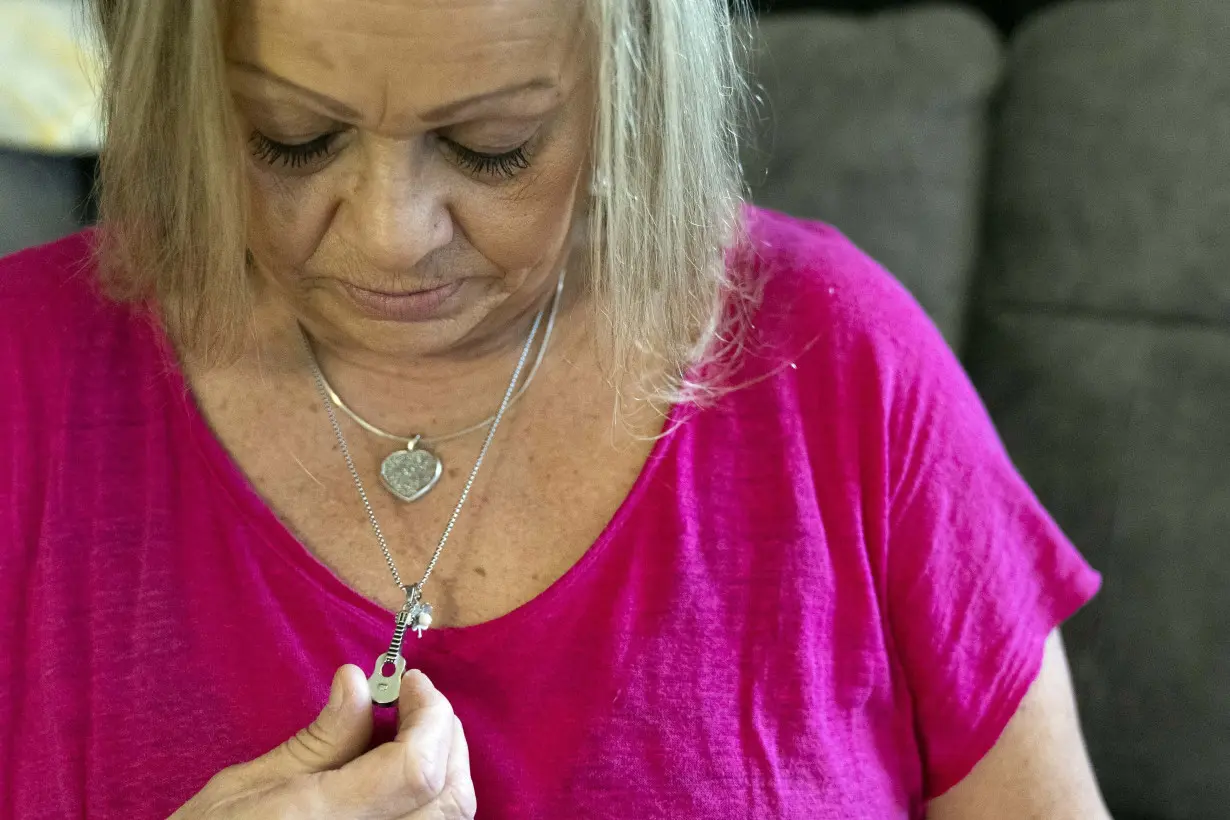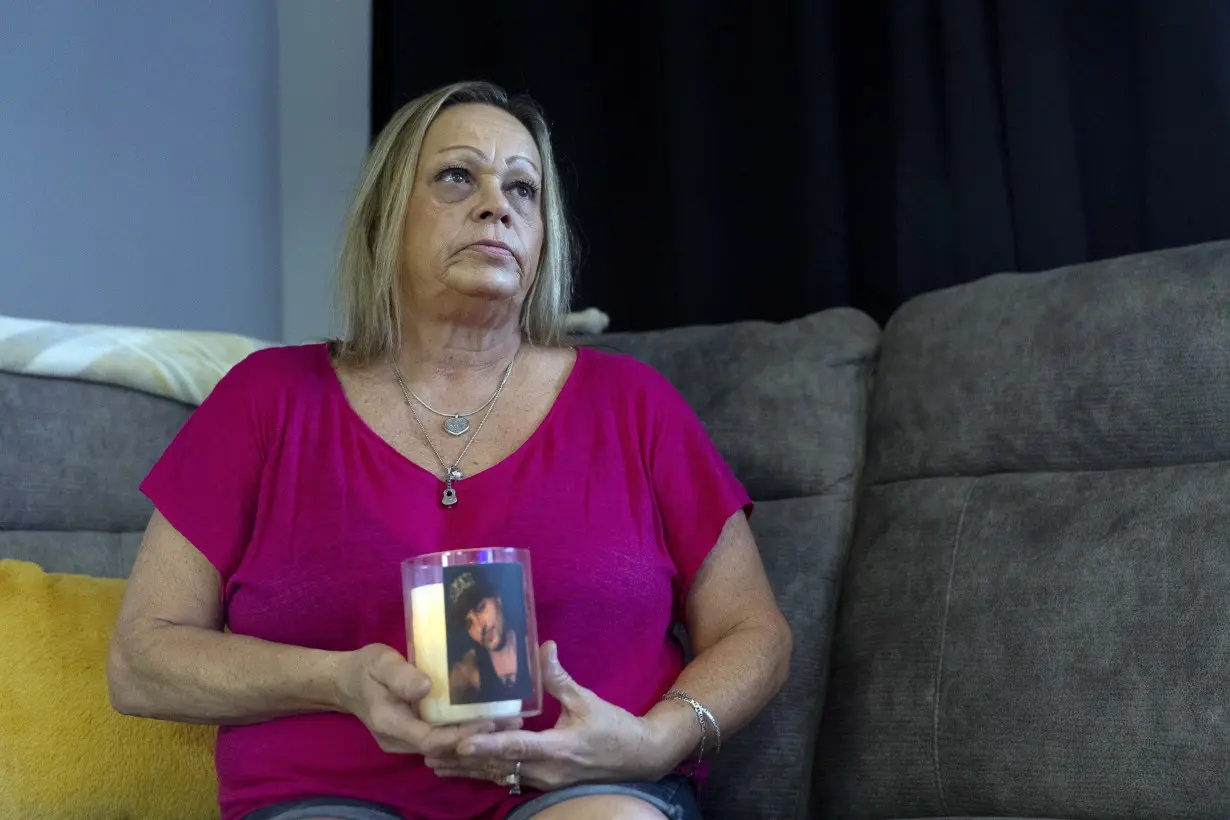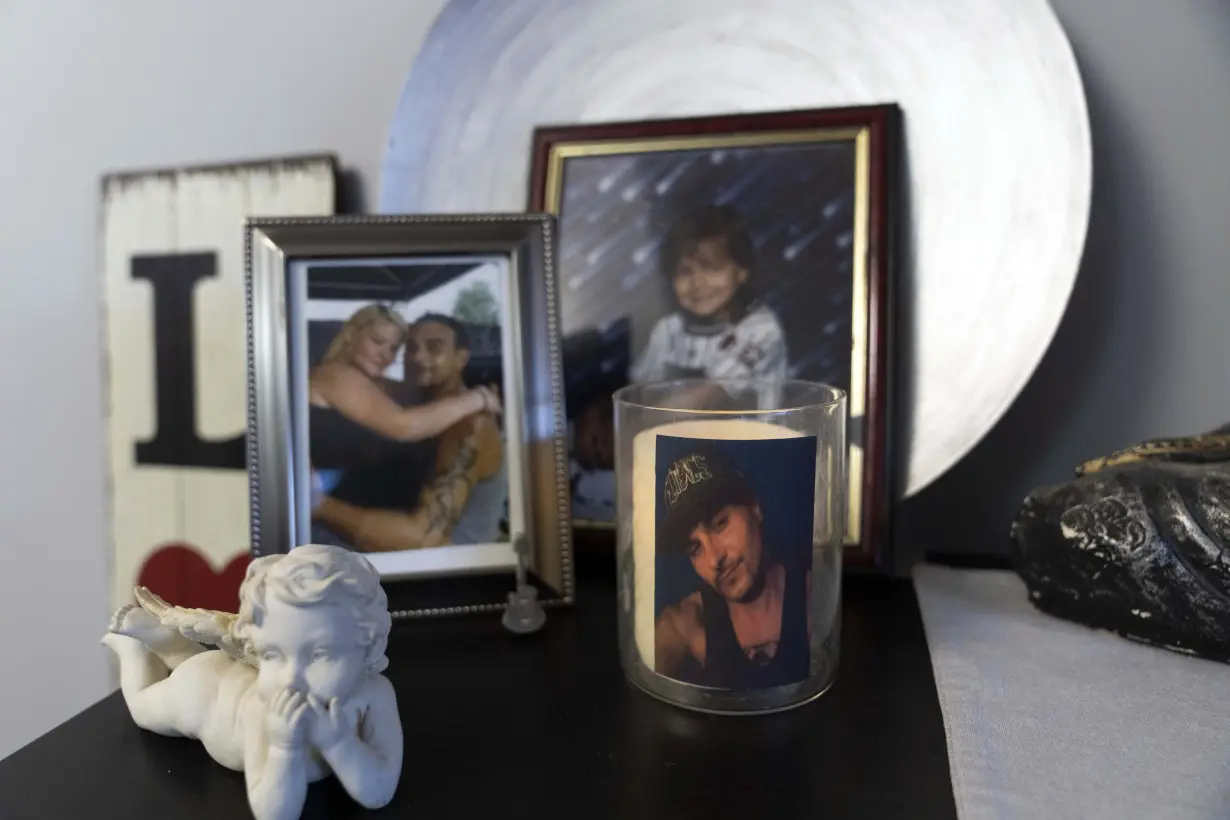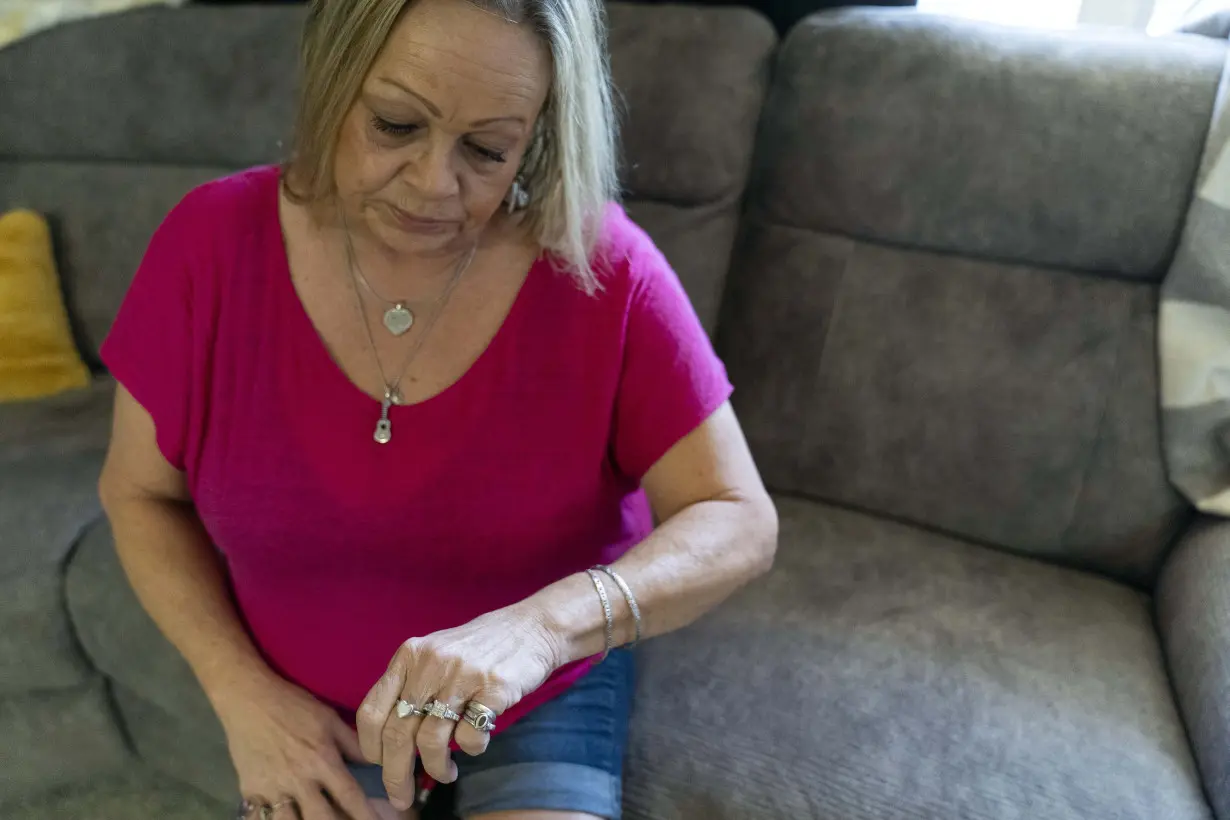BALTIMORE (AP) — When Trea Ellinger left a Baltimore drug rehab facility last summer, he assured his anxious mother that everything was fine. He had his medications and was planning to meet up with his girlfriend.
By the following afternoon, he was dead — not from the violence his mom feared he might face, but because he didn’t survive an encounter with first responders in downtown Baltimore.
Ellinger, 29, died after being sedated and restrained. Despite repeated comments from police and medics at the scene acknowledging the dangers of lying face down in the prone position, responders failed to act urgently when the handcuffed Ellinger turned onto his stomach and remained that way for several minutes, according to investigators and experts.

His death adds to a list of similar cases. A recent investigation led by The Associated Press found that the practice of giving sedatives to people detained by police has spread quietly across the nation over the last 15 years. The strategy, which was intended to reduce violence and save lives, has resulted in some avoidable deaths.
In Ellinger’s case, the autopsy determined that he died from overdosing on an antidepressant and methadone, which is commonly prescribed to curb opioid cravings. The findings didn’t say if other factors might have contributed to his death.
His mother, Lori Ellinger, questions the autopsy’s findings and wants to know why paramedics decided to use an injectable sedative.
“I do believe they killed my son with that shot,” she said. “He shouldn’t be dead at 29 years old.”

Independent experts say Trea Ellinger could have died from the combined effects of being sedated and lying prone, which can obstruct a person’s airways.
The Baltimore City Fire Department, which employs the city’s medics, provided copies of its policies regarding the use of sedatives, physical restraints and other related topics. But the agency declined to comment on the circumstances surrounding Ellinger’s death, citing the potential for future litigation.
None of the first responders involved have been charged, and Ellinger’s family hasn’t sued.
According to an investigative report released in May by the Maryland attorney general’s office, a 911 caller reported that a man was lying in the middle of a downtown Baltimore street, speaking incomprehensibly, and acting combative and distressed.

Police body camera footage of the encounter shows officers handcuffing Ellinger at the request of medics. Officers laid him on his side until he was injected with midazolam and then lifted him onto a stretcher.
“As long as he’s not lying face down, that would be great,” one of the medics says.
Ellinger was initially positioned on his side again, but his continued flailing shifted him onto his stomach while first responders affixed the stretcher straps, according to the report. Inside the ambulance, one medic started checking his vital signs while another sat by his head. He remained face down, sometimes struggling against the stretcher’s straps, the report says.
Four minutes later, the medics discussed getting Ellinger repositioned, but they didn’t act immediately. After another minute passed, Ellinger was “moving only slightly,” the report says. Finally, a medic released the straps and helped roll Ellinger onto his side, noting that his lips were blue. The same medic told his colleague he could administer Narcan, an opioid overdose reversal medication.

Ellinger was unhandcuffed and placed on his back as medics began performing chest compressions, according to the report. He regained a pulse and was transported to the hospital, where he later died.
The report was produced under a relatively new state law that requires the Maryland attorney general’s office to investigate all in-custody deaths. In this case, investigators specifically noted that they were only tasked with investigating the actions of the police officers, not those of the medics or other first responders.
Eric Jaeger, an emergency medical services educator in New Hampshire who has no connection to the case, said the most obvious problem was that the medics left Ellinger prone for several minutes, potentially hindering his ability to breathe. He said he shows the bodycam footage to his students as an example of what can go wrong when a patient’s airways aren’t prioritized during sedation.
“I think Trea Ellinger would be alive today if he had been placed on the stretcher face up,” Jaeger told the AP.
He also questioned the initial decision to sedate Ellinger, saying medics should be particularly discerning about when to administer such drugs because of the risks they pose.
When dealing with an agitated patient, fire department policy directs medics to “place the patient in supine position (face up) as soon as practical.” A different policy says a restrained patient should be placed “face up or on their side, if at all possible.”
Fire officials declined to answer questions about the case, including whether the agency is conducting an internal review. The union representing firefighters and paramedics also declined to comment, and the mayor’s office didn’t respond to recent inquiries about the case.
It appears the decision to sedate Ellinger using midazolam was in accordance with department policy.
Gail Van Norman, professor emeritus of anesthesiology at the University of Washington, said the sedative could have depressed his respiration and relaxed the muscles of his upper airway, making him more vulnerable to cardiac arrest.
“The medics made a few medical mistakes,” she said. “But this was a rapidly evolving situation where the unexpected happened. I don’t envy them the decisions they had to make.”
Ellinger died last July. In April, Baltimore prosecutors announced their decision not to bring charges. The investigative report was released the following month.
Meanwhile, Lori Ellinger is still trying to process the untimely death of her only child. She wears a necklace shaped like a guitar that symbolizes Trea’s passion for music. She scrolls through old photos on her phone and reminisces about his childhood.
Trea Ellinger grew up in rural northeastern Maryland and worked for a concrete company after finishing high school. Despite his struggles with substance abuse, he spent much of his 20s crisscrossing the country with a traveling carnival, a job he loved. In the months before his death, he was trying to stay on track and taking methadone to curb his opioid cravings.
His mom said he had been previously diagnosed with mental health issues, including bipolar disorder and schizophrenia.
Lori Ellinger visited her son at his rehab facility and brought him some groceries the day before his death. She said he seemed in good spirits. But a couple hours later, he called and said another resident had stabbed him in the shoulder during an argument. His injuries weren’t severe, but the facility asked him to leave, she said.
She believes he ended up sleeping on the streets that night. The following afternoon, he was seen stumbling around downtown Baltimore, falling repeatedly and acting disoriented, according to the investigative report.
Watching the videos and reading the report, Lori Ellinger’s heart breaks for her son. Clearly he was experiencing some sort of crisis, but she didn’t get a call until hours later, when a nurse told her he had already died.
“I love and miss him,” she said. “We had a lot of good years — but not enough.”

 Trump has begun another trade war. Here's a timeline of how we got here
Trump has begun another trade war. Here's a timeline of how we got here
 Canada's leader laments lost friendship with US in town that sheltered stranded Americans after 9/11
Canada's leader laments lost friendship with US in town that sheltered stranded Americans after 9/11
 Chinese EV giant BYD's fourth-quarter profit leaps 73%
Chinese EV giant BYD's fourth-quarter profit leaps 73%
 You're an American in another land? Prepare to talk about the why and how of Trump 2.0
You're an American in another land? Prepare to talk about the why and how of Trump 2.0
 Chalk talk: Star power, top teams and No. 5 seeds headline the women's March Madness Sweet 16
Chalk talk: Star power, top teams and No. 5 seeds headline the women's March Madness Sweet 16
 Purdue returns to Sweet 16 with 76-62 win over McNeese in March Madness
Purdue returns to Sweet 16 with 76-62 win over McNeese in March Madness








